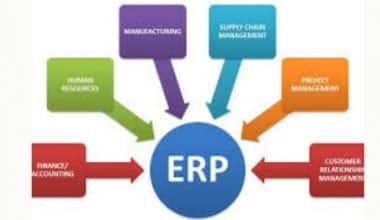Understanding owner’s equity, also known as net assets, will help you determine what you possess after paying off any debts. Calculating owner’s equity can help you adapt and increase your small business’s profit margins.
This article defines owners’ equity, explains how to calculate it with the formula and some examples, and discusses ways to improve your owners’ equity from the details of the statement.
What is Owners’ Equity?
Owner’s equity is defined as the percentage of a company’s total asset worth that can be claimed by its owners (sole proprietorship or partnership) and shareholders (if it is a corporation). It is computed by subtracting all liabilities from an asset’s total value (Equity = Assets – Liabilities).
The liabilities are the sums owing by the owner to lenders, creditors, investors, and other individuals or entities who contributed to the asset’s purchase. The sole distinction between owner’s equity and shareholder’s equity is whether the company is held tightly (Owner) or widely (Shareholder).
In simple words, owner’s equity is defined as the amount of money invested in the business by the owner minus any money taken out by the owner. As an example: If a real estate project is worth $500,000 and the loan amount is $400,000, the owner’s equity is $100,000 in this situation.
Owners’/Shareholder Equity Components
The primary components of owner’s equity are as follows:
#1. Earnings retained
The value of the shareholder’s equity includes the amount of money shifted to the balance sheet as retained earnings rather than paid out as dividends. The retained earnings, net of income from operations and other activities, represent shareholder equity returns that are reinvested back into the company rather than distributed as dividends. The amount of retained earnings grows over time as the company reinvests a portion of its income, and it may become the greatest component of shareholder equity for long-lived companies.
#2. Shares in circulation
The amount of stock that has been sold to investors but has not been repurchased by the company is referred to as outstanding shares. When determining the value of a shareholder’s equity, you consider the number of outstanding shares.
#3. Treasury securities
The number of stocks purchased from shareholders and investors by the corporation is referred to as treasury stock. The number of shares accessible to investors is determined by subtracting the amount of treasury stock from the overall equity of the company.
#4. Increased paid-in capital
The amount of money paid by shareholders to acquire stock above the specified par value is referred to as additional paid-in capital. You calculate this by subtracting the par value of the common stock from the par value of preferred stock, the selling price, and the number of newly sold shares.
How to Use the Formula to Calculate Owners’ Equity
To calculate the owner’s equity you add all of the company’s assets (property, plant and equipment, inventory, retained earnings, and capital goods) and subtract all of its obligations (debts, wages, salaries, loans, creditors). Here’s the owners’ equity formula:
Total Assets – Total Liabilities = Owner’s Equity Formula
Owners’ Equity Formula
Examples of Owners’ equity
Here are some examples to help you better understand how owners’ equity works:
Example 1: If you own a $20,000 car but owe $5,000 on it, your owners’ equity is $15,000.
Example 2: Assume you own a $500,000 home. You owe the bank $100,000 since acquiring your home. In this scenario, your assets are $500,000 and your liabilities are $100,000. Because owners’ equity is the difference between your assets and liabilities, in this case, your owners’ equity is $400,000.
Example 3: If your company’s assets are $4 million and its liabilities are $3 million, the owners’ equity is $1 million.
Now that you have seen how the owners’ equity works with these few examples, let’s see how to increase it.
How to Increase Your Owners’ Equity
To grow your owners’ equity, you’ll need to increase your revenue or profits. When attempting to increase it, consider the following:
- Reduce your liabilities.
- Make improvements and renovations.
- Take care of your property.
- Clear your debts.
- Lower manufacturing expenses.
- Boost your profit margin.
- Be patient.
#1. Reduce your liabilities
Consider decreasing your liabilities to avoid asset depreciation. You can do this in different ways, one of which is to replace any existing loans with lower interest rates. This will reduce your debt and responsibilities.
#2. Make improvements and renovations
Consider upgrading your property if you own a home and want to increase your equity. While you cannot change your neighborhood, you may improve your home. A new paint job or the purchase of new appliances are two examples. While buying new appliances may increase your debt, make sure you’ll make a profit in the end. It’s also vital to remember that interior design trends shift. Make sure to renovate your house in neutral tones such as gray, beige, and white that appeal to a broad audience. Light-colored walls, hardwood floors, and neutral tones are ageless, clean, and fresh, and will help you boost the equity of your home.
#3. Take care of your property
Taking care of your assets is critical whether you’re seeking to reduce your liabilities or increase your equity. You may keep your property in good condition by performing routine inspections on the interior and outside of the structure, adhering to all rules, and performing routine landscaping. This should ensure that your property is visually appealing and will attract future investors or owners.
#4. Clear your debts
Paying off any accrued debt would substantially assist you in reducing your liabilities. You can accomplish this by paying more than the minimum balance on any loan. For example, if you own a property, raise your mortgage payments and focus on debt reduction rather than debt accumulation.
#5. Lower manufacturing expenses
Consider cutting manufacturing expenses if you operate a firm. This could include employing more cost-effective items and machinery, streamlining operations, lowering inventory carrying costs, or simply evaluating your spending patterns in connection to your firm. The latter will assist you in determining where you might start spending less in order to lower your overall liabilities.
#6. Boost your profit margins
Increasing your profit margin, like the previous step, could be quite advantageous in minimizing your responsibilities. You can raise product pricing, pay your staff less, hire lesser personnel, or limit the quantity of sales and discounts you offer to customers if you operate a firm.
#7. Be patient.
Though you may not see a boost in your owner’s equity right away, be patient and wait for these numerous factors to work in your favor.
Owners’ Equity on a Balance Sheet
At the end of the business’s accounting period, the owner’s equity is reported on the balance sheet. You calculate it by subtracting total liabilities from total assets. The assets are shown on the left side of the balance sheet, while the liabilities and owner’s equity are shown on the right. Because the owner(s) provided capital to the business while also withdrawing funds, the owner’s equity is always expressed as a net sum.
The value of equity in a sole proprietorship or partnership appears on the balance sheet as the owner’s or partners’ capital account. The balance sheet also shows how much money the owner or partners took out as withdrawals throughout the accounting period. In addition to the balance sheet, businesses keep a capital account, which indicates the net amount of equity from the owner/investments. partner’s
What is a Statement of Owners’ Equity?
A statement of owners’ equity is a one-page report that shows the difference between total assets and total liabilities, as well as the total value of the owner’s equity.
The snapshot depicts the movement of cash flow through a business over a specified timeframe or accounting period. The owners’ equity statement is one of four main financial statements that are typically generated after a company’s income statement.
The owners’ equity statement – also known as the statement of changes in owners, equity, or the statement of retained earnings – is commonly used by sole proprietorships, partnerships, privately held firms, and LLCs. A shareholder’s or stockholder’s equity statement is more complex and includes dividends and stock components and corporations utilize it.
What is the Objective of a Statement of Owners’ Equity?
This critical business tool determines your company’s overall financial health and stability. The equity statement tells if a small business owner needs to invest more capital to offset shortages or if you can increase profits.
Small business owners use the data to make business decisions such as expansion and diversification. Positive equity indicates financial stability and the ability to cover liabilities. Negative equity may imply the possibility of insolvency or an inability to cover fees and obligations. For example, if a company is unable to demonstrate its ability to support itself financially without the owner’s capital inputs, creditors may reconsider granting the company money.
How to Establish Owners’ Equity
#1. Create the statement heading first.
The statement’s headline consists of three lines:
- The company’s name
- The statement’s title. The report would be titled Owners’ Equity Statement for sole proprietors, Partner’s Equity Statement for partnerships, and Shareholder’s Equity Statement for corporations.
- The time period on record
ABC of Business
Owners’ Equity Statement
Ends on December 31, 2021
Owners’ Equity Statement Heading
#2. Provide your financial information.
Enter your asset and liability information to calculate your total owner’s equity, which might be a positive or negative number.
| Example of a positive owner’s equity statement | Example of a negative owner’s equity statement | |
| Business ABC, opening equity balance, January 1, 2022 (if your business is new, enter 0) | $100,000 | $100,000 |
| Investments during statement period | $20,000 | $20,000 |
| Net income during statement period | $75,000 | $75,000 |
| Asset subtotal (Opening equity balance + investments + net income) | $195,000 | $195,000 |
| Withdrawals during statement period | $40,000 | $80,000 |
| Net losses during statement period | $20,000 | $200,000 |
| Liabilities subtotal (withdrawals + net losses) | $60,000 | $280,000 |
| Owner’s equity total (Asset subtotal minus liabilities subtotal) | $135,000 | -$85,000 |
Your ultimate total indicates the owner’s equity, which you can transfer to your balance sheet. For non-corporate entities, an owner’s equity statement is optional. Instead, a small business may use a cash flow statement or income statement to determine equity.
How Should You Use The Owner’s Equity Statement?
Many of your business decisions will be influenced once you’ve completed your owner’s equity statement.
#1. Distributions of profits
You can pay yourself more if you have positive equity. Negative equity limits profitability.
#2. Share circulation
Positive equity expands the amount of available shares to shareholders. Negative equity restricts the number of shares available to owners.
#3. Employee stock ownership scheme (ESOP)
Employees have more stock options when their equity is positive. Employees’ access to shares is restricted due to negative equity.
#4. Capital Contributions
Positive equity minimizes the demand for capital contributions from owners/shareholders. Negative equity raises the requirement for capital contributions from owners/shareholders.
#5. Diversification of business
Positive equity indicates that you have the capital to fund new business projects, which leads to higher earnings.
#6. Growing your company
Positive equity enables expansion initiatives to be funded. Negative equity could signal a shrinking or downsizing of the business.
#7. Decisions on borrowing
Positive equity influences lenders’ willingness to approve loans. Lenders frequently view negative equity as a high risk.
#8. Personnel decisions
Positive equity may be budgeted for higher staffing requirements. Negative equity may result in layoffs or downsizing.
Owners’ Equity vs. Fair Market Value
Because the amount of owners’ equity may not always represent the actual worth of a business, selling it for the precise amount of owners’ equity would be entirely accidental. In practice, the sale price may differ significantly based on the perceived worth of the company’s cash flows, intellectual property, branding, and other criteria established by the acquirer and agreed upon by the acquiree. Furthermore, if a business must be sold quickly (perhaps due to approaching bankruptcy), the limited number of bids will often lower the price at which the business can be sold.
What Does Owner Equity Represent in Accounting?
An entity’s entire assets less its total liabilities equal its owners’ equity. This is the capital that a sole proprietorship’s owner would potentially be able to get.
Is Equity an Asset or a Liability?
On a company’s financial accounts, equity is neither an asset nor a liability. Equity is the result of deducting obligations from assets. The balance sheet of a corporation shows equity.
Is Equity Considered a Credit or a Debt?
Your firm can be financed in a variety of ways, including debt and equity. Debt is the direct borrowing of money, whereas equity is the sale of stock in your company in an effort to raise money.
Is Equity a Capital or an Asset?
Equity is defined as a company’s capital that is raised and then utilized to fund operations, invest in projects, and buy assets. Typically, a business can raise capital by issuing equity or debt (such as loans or bonds) (or by selling a stock).
Is Equity Essentially a Loan?
Your home’s equity is calculated by deducting your mortgage balance from its market value. Depending on how quickly you pay off your mortgage and how much your property appreciates, building it might take years. With a home equity loan, lenders normally allow you to borrow up to 80% of your equity.
Owners’ Equity FAQs
Is owner’s equity an asset?
Owner’s equity is also known as net worth or net assets. If the sum is negative, it will be recorded on the balance sheet. Because obligations take precedence over equity, omitting to account for your liabilities will offer you an inaccurate picture of what you truly own.
What is equity in balance sheet?
On a firm’s balance sheet, equity represents the shareholders’ stake in the company. Equity is calculated as a company’s total assets less total liabilities, and it is utilized in various critical financial measures such as ROE.
Is owner’s equity debit or credit?
Equity accounts often have a credit balance, whereas contra equity accounts (for example, an Owner’s Draw account) have a debit balance.






